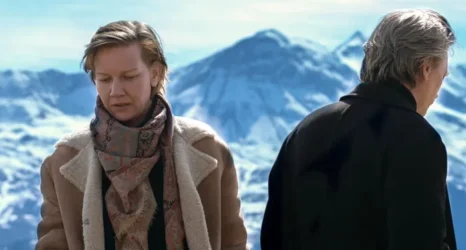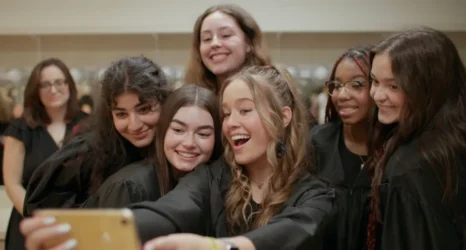Is Wonder Woman the feminist film we’ve all been waiting for?
I had already made up my mind to go see what is now a blockbuster hit, less for Gal Godot and more for my childhood hero—who has been portrayed by Linda Carter in the television series and appeared as the cartoon superhero I also watched on Saturday mornings that inspired many of my Halloween costumes and Underoos underwear. I was not disappointed in this new iteration, with Diana Prince as an Amazon-trained demigod slaying bad guys and looking fierce doing so.
I’m always weary whenever we rush to crown a movie as “feminist.” Surely, Wonder Woman has always been viewed as a feminist superhero icon, and the movie itself presents a strong woman with feminist leanings. But how feminist is this film?
I think of the scene that had so many women shedding tears. I myself got goosebumps, and with good reason, watching Diana transforming into Wonder Woman: her tiara inherited from her brave and fierce Amazon aunt General Antiope (fabulously portrayed by Robin Wright); her scantily-clad outfit resembling the battle-ready, easy-to-maneuver fashion sense of the Amazons on her native mythical island Themyscira. Emerging on the World War I battle field of “No Man’s Land,” Wonder Woman courageously leaves behind the doubting soldiers to take on the great enemy—the German soldiers on the other side. With her bullet-resistant bullets and her magical shield, our superhero deflects the destructive powers of war more than she creates the destruction herself. She hates war and its aftermath, more than she invites it, even though—since girlhood—she had been ready to fight.
In a comic-book world filled with male superheroes and testosterone, watching a woman hold her own—and then some!—is a sight to behold and cherish. That she is the sole woman superhero doing so—or at least the only one carrying her own hit movie this summer—makes such images even more precious.
It matters that this movie was directed by Patty Jenkins, whose previous movie, Monster, featured Charlize Theron in an Oscar-winning turn as serial killer Aileen Wuornos in a complex version of events. This time, in taking on the iconic superhero, Jenkins balances fierce Amazonian woman warrior with a soft feminine side who also fights against the destructive forces of patriarchy.
And yet, there are some flaws in the feminist vision.
Very early in the film, young Diana is seen fleeing from the care of a black woman, later revealed to be her “tutor” but nonetheless placing her in a position of servitude. Although Themyscira is depicted as a multiracial all-woman “paradise,” racial hierarchies are subtly reinforced. Granted, movies are often tricky in attempts at diversity. There is a focus more on racial inclusion more than there is on racial equality. Nonetheless, if General Antiope had been portrayed by a black or Asian actor—not an impossibility considering that Wonder Woman does have a black twin sister named Nubia, who is missing from the narrative but will hopefully have a place in the sequel—there would certainly be moviegoers complaining that women of color are either reinforcing stereotypes like the Strong Black Woman or sacrificing themselves in the interest of the White Savior. As things stand, we must acknowledge that while “women warriors” have a long history in African and Asian contexts, they are often missing in Western narratives, aside from Joan of Arc, which makes Robin Wright’s portrayal as General Antiope quite inspiring, given her early cinematic origins as the delicate feminine Princess Buttercup in The Princess Bride.
The movie goes out of its way to showcase a diverse group of Amazons, even though the few black Amazons we see in battle training embody more musculature. This in itself is not a problem—indeed, the film cast actual female athletes in these roles to emphasize their physicality. However, the unintended consequences is an island filled with masculine women who provide historical context for and a gendered and raced contrast of our superhero, who herself remains slender and feminine in her embodied strength and definitely available for the ensuing heterosexual romance of the story. Such a positioning stokes the individual exceptionalism of Diana more than it celebrates the collective strength of a womanhood living independently from men. This is certainly reiterated when Diana, after saving a young soldier, Steve Trevor (played by Chris Pine) from a plane crash, is compelled to leave her timeless and mythical homeland forever while accompanying this man to the realities of a modern war.
Yes, it is in the interest of fighting a “war to end all wars,” but the gendered optics suggest the sexual power of one man leading a woman astray and away from her community. Jenkins tempers this gender dynamic, somewhat, when Diana jokingly assures Steve that men may be necessary for procreation “but unnecessary for pleasure,” not that surprising from someone who was raised on an all-woman island.
Indeed, Jenkins must be commended here for highlighting the prowess and skill of the Amazons and making their battle scene so exhilarating. One can imagine a male filmmaker catering to a predominately male audience by finding titilating ways to sexualize these women, especially Wonder Woman. The Amazons’ status as warriors—created by the gods to defend humankind—is stunningly depicted in a scene in which they effortlessly defeat invading German soldiers, thus providing one of the film’s highlights.
Finally, there is the rendering of one of the film’s villains, Dr. Maru (Elena Anaya), aka Dr. Poison, another female character who is the antithesis of Wonder Woman: disfigured, brainy and exploited by the male architects of war in developing chemical weapons unleashing wholesale destruction on the world. Given the WWII comic origins of our superhero and this villain, it is not surprising that Dr. Maru was configured as an Asian princess; however, the narrative for the film shifts its focus to World War I, but Dr. Maru remains ethnically ambiguous and a lesser figure for defeat.
Nonetheless, this presentation of contrasts—typical for comic-book storytelling—required a feminist counter-narrative. How much more subversive would the film have been if this force for evil was visually attractive, maybe even representing an “Aryan” German ideal, rather than cast dichotomous portrayals of beautiful heroines versus hideous villains? Indeed, the refocus on WWI over WWII prevented important parallels between a comic world fighting actual Nazis and our own that now sees Neo-Nazism on the rise.
Nonetheless, the WWI trope, which holds less historical resonance than WWII in both the superhero and cinematic universe, provides Wonder Woman with a unique narrative where “warfare” becomes the universal nemesis—rather than if we had Nazis to root against on the other side. In the end, Wonder Woman’s rivalry is not with misguided mankind but the God of War himself, Ares, who is first identified as a German before he is revealed to be an even more insidious global player in the interest of Western imperialism. (I will not reveal his identity here.)
Some have noted that Wonder Woman’s scene at No Man’s Land may have been inspired by the WWI legend of “The Angel of Mons,” a phantom figure emerging on the battle field to help soldiers in their quest for victory. I also thought too of Eugene Delacroix’s “Liberty Leading the People.”
In a world plagued by wars, terrorist acts and misogyny, the mythical existence of a Wonder Woman provides cathartic release and a fulfilling fantasy that our womanhood is a source of strength and leadership. Despite the film’s shortcomings, this crucial message makes it stand above the rest of the superhero films and demonstrates why it still holds so much feminist promise.





